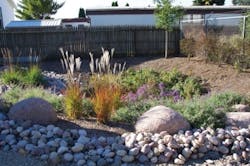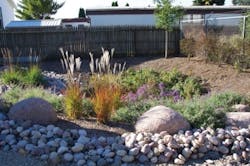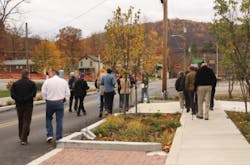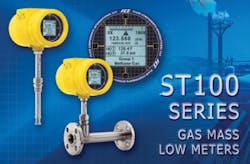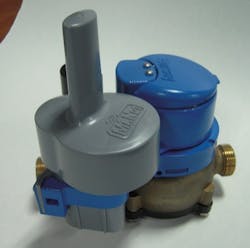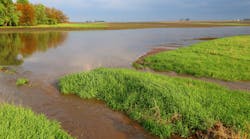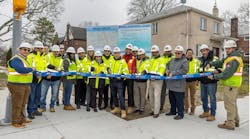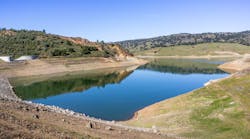Green Infrastructure On The Rise Nationwide
By Katherine Baer
From coast to coast, demand for green infrastructure is higher than ever. That's the finding of "Putting Green to Work: Economic recovery investments for clean and reliable water," a new report by American Rivers, detailing the $1.2 billion allotted to green infrastructure, water and energy efficiency, and environmental innovation through the American Recovery and Reinvestment Act.
Among key findings in the report is the high demand for funding which far exceeded that authorized through the bill. According to the report, states moved more aggressively with green projects than previously indicated and some like Maryland and New York have emerged as leaders whose implementation strategies are a model for other states. The report also includes recommendations for actions at both the federal and state level to further advance green infrastructure.
21st Century Solutions
Like much of the nation's infrastructure, U.S. water systems are crumbling. After several decades of inadequate investment and unmanaged sprawl, America's water and wastewater systems now receive the lowest grade, a D-, of all infrastructure rated by the American Society of Civil Engineers. The Environmental Protection Agency already estimates capital investment needs for clean water and drinking water infrastructure at more than $600 billion over 20 years. Forecasts for greater extremes due to climate change will make the problem worse, as more frequent and intense storms will increase flooding and produce corresponding sewer overflows and stormwater pollution. And more frequent and intense droughts will cause water shortages and higher concentrations of water pollution.
At the same time, we are in dire need of a new approach to investing in America's clean water and drinking water infrastructure. We are at a crossroads today in how we manage our water systems. Traditional water infrastructure will continue to play a role, but much of it is static, solves only a single problem, and requires a huge expense to build and maintain. We must move from old 19th century infrastructure to a combination of green and traditional infrastructure that will meet the needs of the 21st century. The American Recovery and Reinvestment Act took a groundbreaking step in the right direction, dedicating 20 percent ($1.2 billion) of water infrastructure funding to programs for green infrastructure, water and energy efficiency, and environmental innovation (collectively called the Green Project Reserve).
This effort represented the first decisive step in a much needed shift away from solely "gray," inflexible water infrastructure towards innovative approaches that will bring water management into the 21st century. More communities are beginning to understand that economic vitality and resilience to climate change rest on adaptation strategies that provide multiple benefits for every public dollar invested. By dedicating 20 percent of water infrastructure funding for the Green Project Reserve, ARRA provided states with the resources to repair and rebuild their water and sewer systems to protect communities for a future marked by more frequent and more intense droughts and floods.
Green Projects
The term "green infrastructure" applies to solutions like rain gardens and green roofs that help slow and absorb polluted stormwater - a leading cause of pollution nationwide. Green infrastructure works with nature to create value for communities through cleaner water, reduced flooding, and energy savings. "Putting Green to Work" found that the need for funding for these projects is far greater than the 20 percent provided through ARRA. States have substantial lists of "shovel-ready" green projects that simply lack funding.
Within the overall category of "green," American Rivers identified a group of "bright green" projects that provide a comprehensive set of environmental and economic benefits. For example, in Maryland, the state chose to provide additional subsidization to projects that received funding under the Green Project Reserve that ranged from wetland restoration to creating "living shorelines" to improving water efficiency through water appliance retrofit programs. The town of Edmonston, MD, received over $1 million to construct a 'green street' that will create or preserve 50 jobs. Thirty maple, elm, sycamore and oak trees will line the street, and energy-efficient streetlights will be powered by wind. Permeable concrete and moisture-loving plants will absorb and filter 90 percent of the polluted stormwater that typically flows into the Anacostia River to reduce flooding and pollution.
New York took a unique approach to the Green Project Reserve by using a significant portion of this funding to create a new program, the Green Innovation Grant Program. Under this program, New York was able to separately solicit and evaluate green projects, ultimately funding 57 projects for just under $45 million, with the balance of state Green Project Reserve funds used to integrate existing gray and green infrastructure. Projects included the Green City Homes project in Syracuse, a solution to housing needs and a demonstration of green homes that save water and energy and manage stormwater with green infrastructure solutions. Green City Homes will utilize pervious roadways and sidewalks to manage over one million gallons of stormwater that would otherwise contribute to combined sewer overflows.
Future investments should be targeted toward these bright green projects. Maryland and New York are clearly leaders when it comes to bright green solutions and should be used as models for other state programs.
Recommendations
American Rivers identified a number of key recommendations in "Putting Green to Work" to help advance green infrastructure at the federal and state levels. These recommendations include:
National
- Federal water infrastructure funding should be continued and increased to support state demand for bright green projects. Congress should reauthorize the Clean Water and Drinking Water State Revolving Funds to include dedicated funding for bright green projects.
- Federal water infrastructure funding should provide incentives for states to fund bright green projects such as waiving state match requirements.
- EPA must continue to improve its funding guidance to states and provide additional technical assistance to ensure the best use of limited funds
- Funding for water infrastructure and climate adaptation should be aligned to promote bright green approaches to create resilient communities.
States
- States must act to remove statutes, regulations or policies that stand in the way of pursuing integrated approaches to bright green infrastructure.
- Project evaluation criteria should be revised to reflect and prioritize multiple environmental benefits.
- Vigorous outreach for new Green Reserve Projects to a range of traditional and nontraditional partners should be required in order to result in a wide range of strong projects.
- States should promote loan-payback mechanisms for green projects to ensure that communities can integrate these approaches as part of regular financial planning for clean and safe water.
ARRA marked a step forward for our nation, but it was only a first step. Now we must continue to accelerate our progress toward 21st century bright green infrastructure to ensure long-term reliable clean water supplies. The challenge is to make today's bright green tomorrow's norm, and to constantly push the boundaries of environmental and economic sustainability.
WW
Read "Putting Green to Work" at www.americanrivers.org/greenfunding.
About the Author: Katherine Baer is Senior Director of American River's Clean Water Program where she leads federal clean water policy work on reducing sewage and stormwater and increasing green infrastructure. As part of this work, Baer has worked with utilities, states and local communities to increase the use of green infrastructure as an effective method to reduce stormwater, flooding and sewer overflows and to incorporate these techniques as part of climate adaptation strategies.
More WaterWorld Current Issue Articles
More WaterWorld Archives Issue Articles
